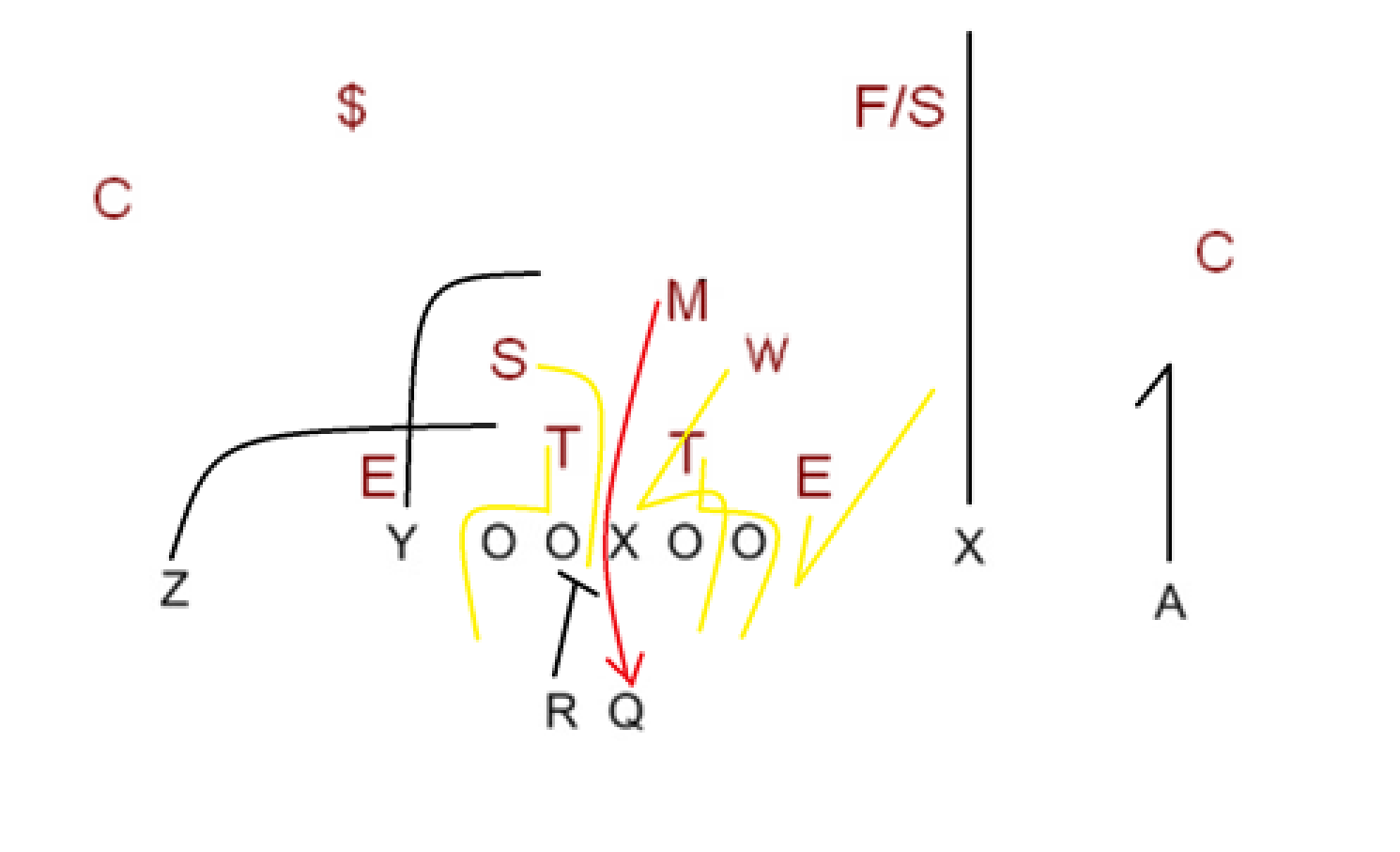Stanford lost to Notre Dame on Saturday. It was a devastatingly close game, and the Cardinal fell in the final minutes. On Stanford’s final play, Notre Dame sacked senior Cardinal quarterback Kevin Hogan, forcing an intentional grounding penalty that took 10 seconds off the clock and immediately ended the game. The loss took No. 25 Stanford to 3-2 on the season, but while the Cardinal are almost certainly out of the national championship race, they still control their destiny in the Pac-12 Conference.

Having reached the Stanford 49 with a first down, no timeouts and ten seconds left in the game, Stanford knew that it had to throw the ball. David Shaw’s squad needed an 18-22 yard completion to set up a spike to stop the clock and a game-tying field goal. Notre Dame defensive coordinator Brian Van Gorder responded not with prevent defense but an obvious blitz – and that blitz won the game.
Stanford’s pass play here is a variant of the Levels pass concept, an old NFL favorite. The major difference is that since the safeties are already playing extremely deep, instead of two deep routes on the right side to keep the secondary honest, the slot receiver goes deep and the outside receiver (Devon Cajuste, A) runs a short comeback to exploit the empty space immediately in front of him.
With a blitz coming and a pass absolutely necessary, Stanford’s pass protection was critical. Stanford called a half-slide protection, a common protection scheme in college football and the pros. The center, right guard, and right tackle stepped to the right and blocked the area in front of them; because slide/area blocking doesn’t force linemen to block specific assignments, it is effective against the fluid, assignment-switching blitz “stunts” that Notre Dame ran to great effect earlier in the game. Meanwhile, Stanford asked its left guard and tackle to block specific man assignments (likely the tackle and end on the left side). The sum total of this is that a gap typically ends up opening in the middle of the offensive line, which is normally filled by a pass-protecting running back (R).
Seeking to earn a game-ending sack, Notre Dame avoided the tackles – Stanford’s best pass protectors – and called a devastating interior blitz to get pressure on Hogan immediately.
ND’s ends (E) dropped into coverage, which allowed them to cover quick intermediate routes, but more importantly ruined the blocking assignments of any offensive tackles in man protection. Its interior defensive tackles (T) jabbed at the offensive guards opposite them before looping outside towards the tackles to prevent Hogan from scrambling. Meanwhile, the weakside linebacker (W) attacked junior center Graham Shuler before working rightwards to pull Shuler with him and open up a huge hole in the middle of the offensive line – the gap in Stanford’s half-slide protection. Through that open gap, the other two linebackers (S and M) blitzed.
The left defensive tackle and the weakside linebacker only needed to occupy the interior linemen for a split second. They did, and that was enough. One rushing linebacker took out senior running back Remound Wright (R), opening the way for safety Elijah Shumate (M, playing as a middle linebacker in this alignment) to have a free run at Kevin Hogan.
It’s easy to play Sunday morning quarterback (or Tuesday morning quarterback, in my case). But this blitz was essentially symmetrical – it would have worked if Shuler had blocked left or right. This play was designed to tear a half-slide protection into pieces, and it did. Stanford could have called a full-slide protection, where every offensive lineman blocked an area, but against six potential rushers (even if the blitz only required five), a six-blocker slide call would have risked forcing a 200-pound running back to block a 270-pound defensive end. Put simply, Stanford was between a rock and a hard place.
Potential second-guessing aside, though, the fact remains that if the offense is in a bad position with 10 seconds left in the game, it’s hard to find success. When pressured, Hogan had had issues throwing the ball away all game, and because it’s hard to react when a 208-pound ball of aggression is gunning for you, Hogan took the sack and grounding penalty to end the game.
Contact Winston Shi at wshi94 ‘at’ stanford.edu.
